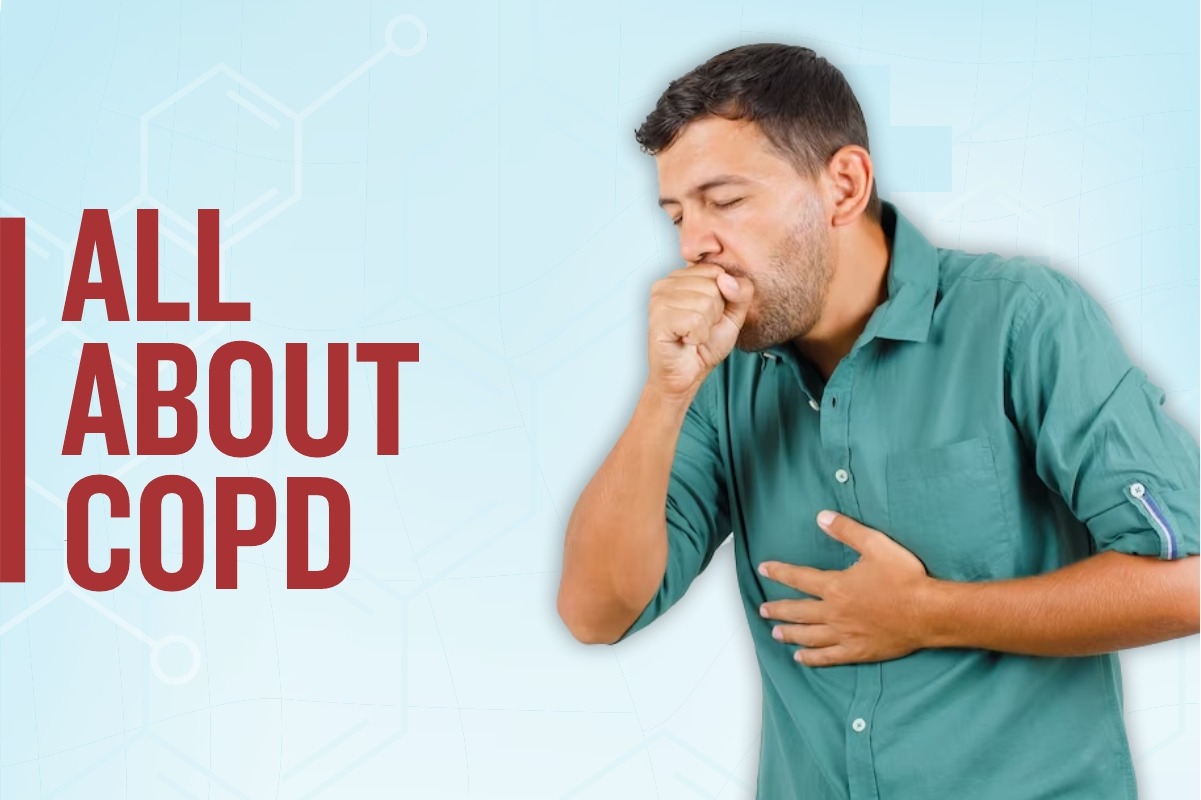Understanding IVF
Jul 25, 2024

Introduction
Chronic Obstructive Pulmonary Disease, or COPD, is a group of chronic diseases in which the airflow to the lungs is obstructed by inflammation of the passages. The lungs in our body are divided into two tubes known as Bronchi, which are further divided into many small subways called bronchioles connected to the air sacs. These air sacs are linked to tiny blood vessels known as capillaries. Air sacs extract and introduce carbon dioxide and oxygen, respectively, through the capillaries. A person suffering from COPD will have expanded air sacs and bronchioles, leaving some air trapped in them during exhalation, causing breathing and other problems. This respiratory medical condition is considered the cause of the second-highest number of deaths in India after Heart conditions. There is a dire need to be aware of the various aspects of this deadly disease.
Smoking is one of the major causes of developing COPD in developing countries. Cigarette smoke and other irritants are one of the major causes of COPD. However, not all cigarette smokers develop COPD, thereby confirming that genetic factors also play a role in COPD. Alpha-1-antitrypsin deficiency (AAt) is a protein produced by the liver that protects the lungs. COPD is a common disease among those
who have AAt deficiency due to genetic factors. Moreover, exposure to harmful chemicals and fumes during cooking in poorly ventilated homes induces COPD.
The two major diseases that result in COPD are Emphysema and Chronic bronchitis.
● Emphysema:- In this disease, the fragile walls of alveoli collapse, which results in the trapping of air during exhalation.
● Chronic bronchitis:- The bronchial tubes become inflated and hence narrow. Furthermore, mucus production can cause further obstruction to the air passage.
COPD is a late-stage disease that appears on the surface only after significant lung damage. Here are a few symptoms of COPD:-
● Shortness of breath, especially during physical activities
● Wheezing
● Chest tightness
● A chronic cough that produces coloured mucus.
● Frequent respiratory infections
● Lack of energy
● Unintended weight loss (in later stages)
● Swelling in ankles, feet, or legs
Considering the graveness of the disease, it is quite essential to diagnose COPD within time. Medical experts consider the following factors to ascertain if someone has COPD
Medical History:- Along with the patient’s affinity to pollutants, their smoking history and genetic factors are taken into account.
Physical Examination:- Healthcare professionals will conduct a physical examination that involves checking blood pressure, examining the nose & throat, and monitoring feet and ankles for any traces of swelling.
Tests: One of the most commonplace tests is the spirometer test, in which the sufferers blow into a tube attached to a machine. It measures the amount of air one can breathe in & out and how quickly one can do it. Apart from this, here is the list of the rest of the tests performed for COPD diagnosis:-
● Pulse Oximetry: Used to evaluate oxygen level.
● Arterial Blood Gases (ABGs): To check oxygen and carbon dioxide levels.
● Electrocardiogram (ECG or EKG): Checks heart functions.
● Chest X-ray or Chest CT scan: Tests that determine changes in the lungs due to COPD.
● Exercise Testing: Check if the oxygen levels drop when one exercises. Treatments COPD treatment basically focuses on relieving symptoms and avoiding any future diseases. Here are a few treatments that your medical expert might recommend.
● Bronchodilators: It helps the patients breathe easily.
● Anti-inflammatory medications: It controls lung inflammation.
● Supplemental Oxygen: To counter the low oxygen levels.
● Antibiotics: To prevent & treat lung infections.
● Vaccinations: It helps prevent ailments like flu and pneumonia.
● Anticholinergics: These help clear mucus, which increases airflow.
● Leukotriene Modifiers: These affect or destroy leukotriene – chemicals that cause tightened airways.
● Expectorants: These are for thinning of mucus.
● Antihistamines: These relieve one of the symptoms, such as watery eyes, sneezing, etc.
● Antivirals: To treat viral infections such as influenza, which can be dangerous for people with COPD
Preventions As they say, “Prevention is always better than cure”.
● Quit Smoking
● Get yourself vaccinated against pneumococcal pneumonia.
● Protect yourself against exposure to toxic chemical fumes.
● Eat a healthy & well-balanced diet.
● Resort to regular exercising.
COPD is a grave condition, but when acted upon in time, with the help of medical experts, it can be controlled effectively. Though lung damage can’t be reversed, timely treatment helps one continue the activities they love despite a decreased air capacity. Don’t lose hope, and stay positive.
Sr. Consultant – Respiratory & Sleep Medicine